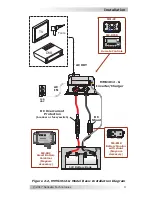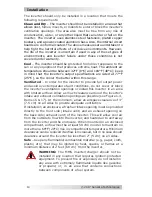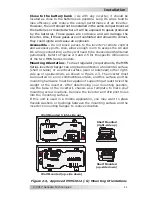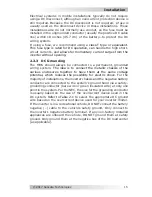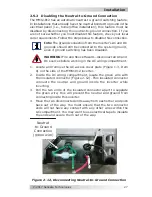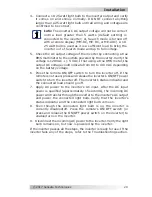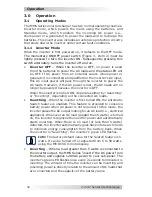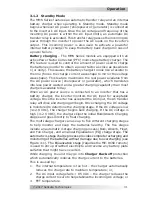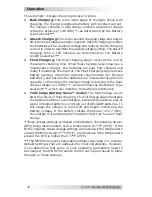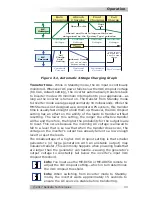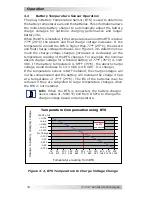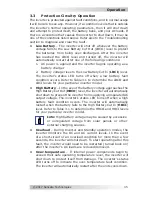
© 2017 Sensata Technologies
21
2.4
AC Wiring (MMS1012 model only)
This section describes the MMS1012’s required AC wire size and
overcurrent protection, and provides info on making AC connections.
Info:
This AC Wiring section does not apply to the
MMS1012-G model. The MMS1012-G model comes wired
from the factory with a power cord for the AC input and
dual outlets on top of the inverter for the AC output.
WARNING
:
All wiring should be done by a quali
fi
ed
person or a licensed electrician following local/NEC codes.
2.4.1 Pre-AC Wiring Requirements
CAUTION
: Before attempting any AC wiring, review the
safety information at the beginning of this manual:
• Always use properly rated circuit breakers. If using an
electrical sub-panel, circuit breakers can be moved
from the main electrical panel to the sub-panel only
if the breakers are listed for that sub-panel.
• AC wiring must be no less than #12 AWG (3.3 mm
2
)
gauge copper wire on input and #14 AWG (2.1 mm
2
)
on output; and the wire must be approved for the
application (i.e., residential, RV, or marine wiring).
• DO NOT connect the inverter’s output to an AC power
source. This could cause severe damage to the
inverter and is not covered under warranty.
• The wire sizes recommended in this manual are based
on the ampacities given in Table 310.17 (in free air)
of the National Electrical Code. ANSI/NFPA 70, for
75°C (167°F) copper wire based on an ambient
temperature of 30°C (86°F).
Note:
The term “in free air” is defi ned by the NEC as not
encased in conduit or raceway.
WARNING:
To reduce the risk of
fi
re, do not connect this
inverter to an AC load center (circuit breaker panel) having
multi-wire branch circuits connected.
2.4.2 AC Wire Size and Overcurrent Protection
The AC input and output wiring must be sized
per NEC and
local
electrical safety code requirements
to ensure the wire’s ability to
safely handle the inverter’s
maximum load current. After determining
the proper AC wire sizes, the inverter’s AC input (unless you are
using a
fl
exible cord) and output wires are required to be protected
against overcurrent and have a means to disconnect the AC circuits.
All inverter AC input/output wiring must be protected by an overcurrent
protection device. Overcurrent protection must be provided by fuses
Installation



